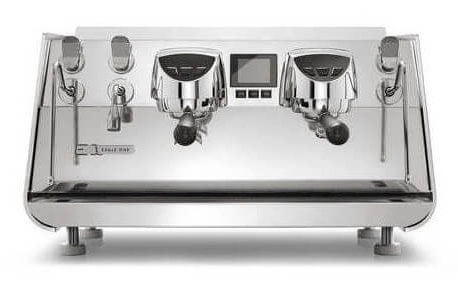The job of an espresso machine is deceptively simple: it just has to push hot water through your coffee at nine bars of pressure. The high pressure an espresso machine generates is what makes espresso possible. High pressure gives espresso a lot of its characteristics, like its syrupy mouthfeel and beautiful crema.
High pressure has its downsides, however. If there are any gaps or flaws in the way a barista prepares the puck of coffee before putting it in the machine, then the water will find them and push its way through.
These shortcuts through the puck, called channels, are the fastest way to ruin a shot of espresso. Instead of extracting flavor from the coffee evenly, the water passing through the channel will over-extract the coffee surrounding the channel, giving the coffee bitter, burned flavors.
One of the best tools an espresso machine can offer baristas to prevent channeling is pre-infusion. In machines with pre-infusion, the water enters the puck at low pressure during the first few seconds of the shot. This gives the puck time to absorb water before it gets hit by the full nine bars of pressure from the pump.
Wetting the puck before it reaches full pressure has many advantages. As well as reducing channeling, and therefore making espresso taste better, it seems to make espresso more consistent. It also allows the barista to grind finer and thus get more flavor out of the coffee.
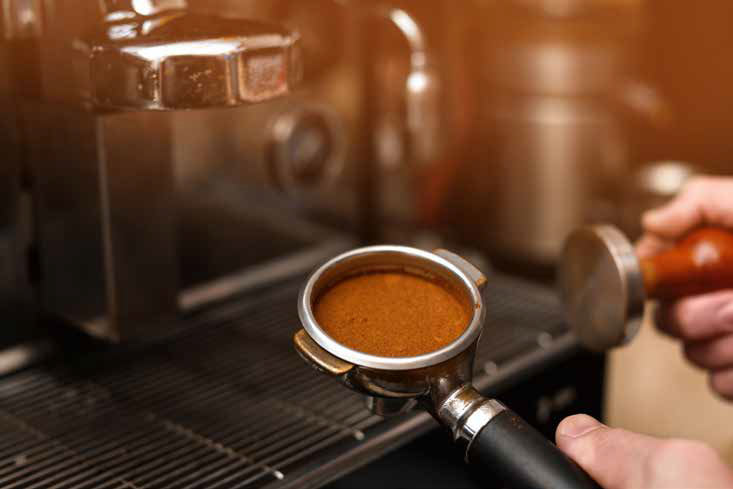
When you’re choosing an espresso machine, therefore, pre-infusion is an important selling point. But it is widely misunderstood, and there are several different types of pre-infusion found in modern espresso machines. In this post, we’ll try to cut through the jargon and explain how pre-infusion works, to help you decide which system is best for you.
How does pre-infusion make espresso better?
Pre-infusion gives the bed of coffee time to absorb water so that it can be evenly wetted before it gets hit with the full 9 bars of pressure.
Dry coffee tends to resist the flow of water. It’s similar to pouring water onto dry soil: water will flow right through cracks in the earth, and some clumps of soil will stay dry or even float on the surface of the water. Once the soil is wet, however, the water flows through it evenly.

While the coffee is dry, water will force its way through small gaps in the coffee, digging itself a channel as it goes — just like it finds a path through cracks in the soil. Giving the puck a bit of time to absorb water before hitting it with full pressure, on the other hand, allows water to flow through the coffee more evenly. More even flow means fewer channels and better-testing espresso.
Pre-infusion might even be able to fix small mistakes that the barista makes.
When coffee grounds absorb water, they swell up. If there are any gaps or cracks in the puck from tamping incorrectly, the swelling coffee grounds will push against each other and seal up any small holes.
Pre-infusion makes espresso more consistent. For customers who like to drink the same coffee day after day, consistency is one of the most important factors that decide which coffee shop they go to each morning.
The other major advantage of pre-infusion is that it allows the barista to grind finer and get more flavor from the coffee. After pre-infusion, water flows through the puck more quickly. This means that the barista can set the grinder a notch or two finer and still get the same shot time.
We don’t know exactly why this happens, but one theory is that without pre-infusion the flow of water through the puck carries tiny coffee particles called ‘fines’ to the bottom of the puck, where they can block the holes at the bottom of the filter basket. When the coffee is gently wetted, the fines are trapped in place, so don’t block the holes as much.
Different pre-infusion methods
Different machines provide pre-infusion in different ways. The result is similar, but each method of pre-infusion has different advantages and disadvantages.
The simplest form of pre-infusion uses the pressure of water from the tap for the pre-infusion stage. When you start the shot, the tap opens, and water begins to flow under mains pressure only. When pre-infusion finishes, the pump turns on and kicks the pressure up to the full nine bars.
This type of pre-infusion is mostly found on home machines that use an E61-style group head, such as the Sanremo Cube. It can work really well, but because it relies on the mains pressure for the pre-infusion, it is only as consistent as the water supply, so is rare on modern commercial machines.

The second type of pre-infusion is one of the most common on commercial espresso machines. In these machines, the group head contains a small spring-loaded chamber. At the beginning of the shot, the water starts filling the chamber as well as flowing onto the puck. Until the chamber is full, the pressure isn’t able to build up to the full nine bars, so the time it takes to fill the chamber determines the pre-infusion time.

This is the principle behind the Soft Infusion System developed by Nuova Simonelli and Victoria Arduino. This type of pre-infusion is very effective and low-maintenance. The only disadvantage is that the preinfusion time is set at the factory and can’t be adjusted.
The Soft Infusion System, found in Nuova Simonelli and Victoria Arduino espresso machines, is robust, very consistent, and makes for great-tasting coffee.
The third type of preinfusion uses a flow restrictor to limit the flow of water during the first part of the shot. The flow restrictor is a tiny hole, less than one millimeter across, that the water has to pass through. Slowing the flow down this way prevents pressure from building up. Once pre-infusion is finished, the water is redirected around the flow restrictor so that it can reach full pressure.
This type of pre-infusion is found on some machines by Sanremo, such as the Cafe Racer. It is a bit more complicated than a pre-infusion chamber, but it has the advantage of being programmable — the barista gets to decide how long the pre-infusion time should be.
The last kind of preinfusion just uses the pump to change the pressure. When the shot starts, the pump operates at lower pressure. When pre-infusion finishes, the pump ramps up to full power. This sounds simple, but it needs a special kind of pump, so it can be expensive to implement in practice.
This is the principle behind La Marzocco’s Strada EP, which allows full control of the pressure through all stages of brewing.
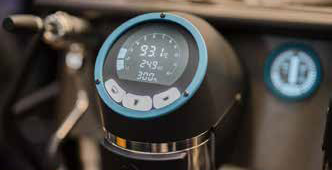
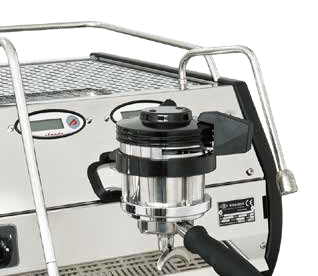
Pre-wet or Pre-infusion?
Some espresso machines offer a slightly different feature, sometimes called ‘pre-wet’. Pre-wet isn’t as effective as true soft pre-infusion.
Espresso machines using pre-wet don’t pump water in at low pressure. Instead, they wet the puck by turning the pump on briefly, then turning it back off. They let the puck sit for a few seconds to absorb water, then turn the pump back on to finish the shot.
This technology is also sometimes called ‘hard’ pre-infusion because the water hits the puck at the maximum flow rate from the start. ‘Soft’ pre-infusion refers to any of the methods we already explained, which soften the initial flow of water to the puck.
Hard pre-infusion doesn’t seem to work as well as true soft pre-infusion does. Without the gentle pressure of soft pre-infusion pushing water into the puck, the grounds do not get fully saturated. So if you are looking for a machine with pre-infusion, make sure that it is a soft pre-infusion system.
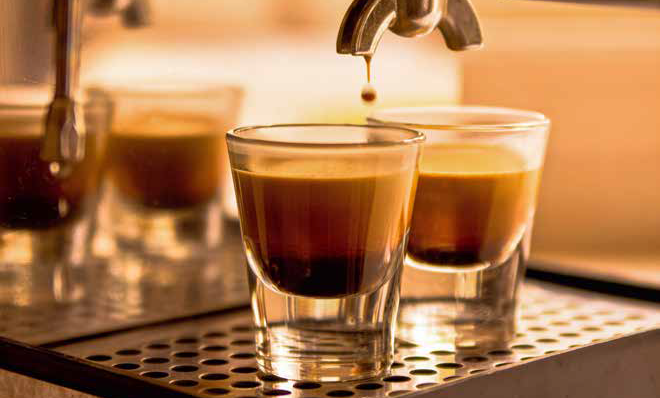
There are plenty of espresso machines on the market that are capable of making great coffee with no pre-infusion system at all. A good barista, using a good grinder , can get good results from almost any modern machine.
Pre-infusion, though, makes it much easier for baristas to get good results. It increases extraction and makes the coffee more consistent — and might even save the espresso if the barista makes a small error in tamping.
For more experienced baristas, playing with the infusion time and pressure gives them a new variable to use in their recipes. Having full control over this stage of the brewing process gives the barista one more way to fine-tune the flavor of the coffee and make the best espresso possible.
Want to know more about how your choice of espresso machine can make your coffee taste better and more consistent?
Contact us for free technical advice on modern espresso technology.
REQUEST FREE CONSULTATION


